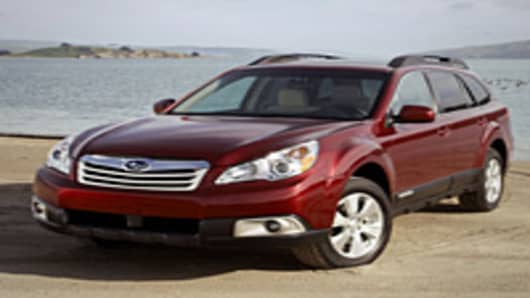The 2011 Flex seats up to seven passengers, comes with a V-6 or V-8 engine, gets up to 17 miles a gallon in the city \(24 on the highway\) and has a suggested retail price range from $29,000 to $45,000. It sits on a Ford D4 car platform.
The Outback gets 19 miles in the city, (27 on the highway) and sits on a Subaru Legacy car platform and has a suggested retail sale price range of $22,000 to $30,000.
It's this combination of car platform with a wide body and high seating that may end up confusing buyers over what they're getting—and how to use it.
"Crossovers are totally for the city and suburbs, not the 'wild west'," says Automobile magazine's DeMatio. "People have all kinds of fantasies on what they're buying and that they (crossovers) can be used for everything. They can't."
But it just may be that the confusion over what crossovers really do that keeps them selling.
"People may not know what they are or what they can do, but drivers like the room and they are generally a good car," says Edmund.com's Caldwell. "They ride better than a SUV and the cargo space is great. People want them to lug around the kids and their sports equipment and the weekend groceries. They're just not really for off road driving."
Minvans and SUVs Not Dead Yet
Even as the crossover sales boom sweeps car buyers, the demise of either the minivan or SUV is premature at best.
Both Toyota and Honda are gearing up new marketing campaigns in 2011 for their respective minivans—the Sienna and Odyssey— by emphasizing the new design changes that make them both 'cooler and sportier' looking.
And Chrysler, which is credited with inventing the minivan back in 1983, is offering a high-powered version of its 2011 Dodge Grand Caravan.
As for the SUV, its 'death' has been reported every time gas prices go up—as they are now. But they are still a strong pull for drivers.





